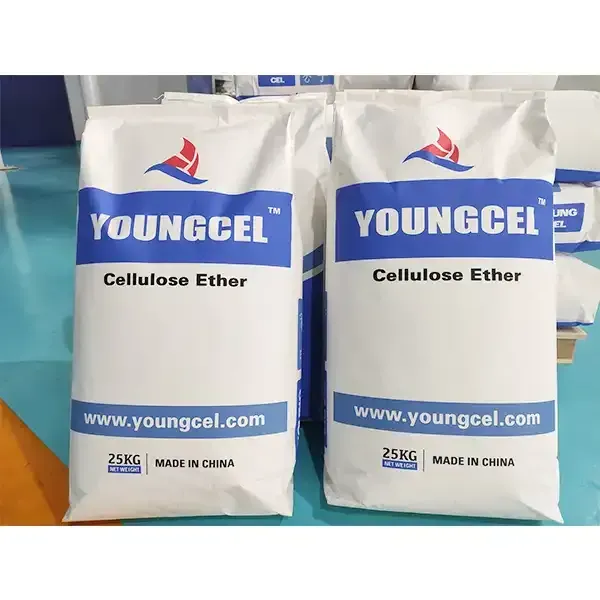Hydroxypropyl Methyl Cellulose (HPMC) An Overview
Hydroxypropyl Methyl Cellulose (HPMC) is a versatile and widely used non-ionic cellulose ether derived from natural cellulose. This compound has garnered significant attention in various industries due to its unique properties, which include solubility, thickening capabilities, and film-forming characteristics. These properties make HPMC an essential ingredient in products ranging from pharmaceuticals to construction materials.
Chemical Structure and Properties
HPMC is synthesized through the modification of cellulose, a natural polymer obtained from wood pulp or cotton. The modification involves introducing hydroxypropyl and methyl groups to the cellulose backbone, which alters its solubility and thermal stability. The degree of substitution—how many of the hydroxyl groups on the cellulose molecule are replaced by methyl and hydroxypropyl groups—affects the properties of the resulting HPMC. As a result, it can be produced in various grades, each suited for different applications, based on viscosity and solubility.
One of the most significant characteristics of HPMC is its ability to dissolve in cold water, forming a viscous solution. This property is vital for many applications, providing thickening and stabilizing functionalities. Additionally, HPMC is known for its excellent film-forming abilities, which allow it to create transparent and flexible films that can be used in various coatings.
Applications in Pharmaceuticals
In the pharmaceutical industry, HPMC is widely used as a binder and film-coating agent in tablet formulations. Its ability to form a strong film makes it an ideal choice for controlled-release medications, allowing for the gradual release of therapeutic agents over time. HPMC is also employed as a viscosity modifier in liquid formulations, enhancing the stability and texture of syrups and suspensions.
Moreover, HPMC is utilized in the formulation of ophthalmic solutions and gels, where its high viscosity provides comfort and longer retention time on the ocular surface. This makes it an essential ingredient in the production of artificial tears and other eye care products.
hydroxypropyl methyl cellulose hpmc

Role in Food Industry
In the food industry, HPMC serves as a thickening agent, emulsifier, and stabilizer. Its usage is particularly common in gluten-free formulations, where it helps to improve the texture and mouthfeel of baked goods. By mimicking the properties of gluten, HPMC can enhance the structural integrity of these products, providing a desirable chewiness and preventing crumbliness.
Furthermore, HPMC is used to create low-fat and reduced-calorie food products. It functions as a fat replacer, providing creaminess and viscosity without the calorie load associated with traditional fats. This versatility has made HPMC a popular ingredient in the growing demand for healthier food alternatives.
Applications in Construction
The construction industry also benefits from the use of HPMC. It is commonly added to cement-based materials such as mortars and tile adhesives. HPMC improves the workability of these materials, allowing for smoother application and enhanced adhesion to various substrates. In addition, it helps retain water within the mix, thereby prolonging the setting time and ensuring better hydration of cement particles.
The addition of HPMC to construction materials also contributes to improved resistance to sagging, enhancing the overall performance of the final product. This makes it particularly valuable in applications where extended open time is essential.
Conclusion
Hydroxypropyl Methyl Cellulose (HPMC) is a multifaceted compound that plays a critical role in a wide array of industries, including pharmaceuticals, food, and construction. Its unique properties—such as solubility, viscosity, and film-forming capabilities—make it an invaluable ingredient in many products, enhancing their performance and functionality. As research and development in this field continue, HPMC is poised to remain a significant component in innovative formulations across diverse sectors. Whether improving health, enhancing food texture, or contributing to construction efficiency, HPMC’s versatility is undeniable.
-
The Application and Significance of Construction RdpNewsMay.19,2025
-
Industrial Grade HpmcNewsMay.19,2025
-
Building Coating Adhesive Building Coating Adhesive HpmcNewsMay.19,2025
-
Application Of Hpmc For Detergent For Detergent In DetergentsNewsMay.19,2025
-
Application Of Hpmc Cellulose In Cement-Based MaterialsNewsMay.19,2025
-
Application Of High Quality Hpmc For Construction In The Field Of ConstructionNewsMay.19,2025




